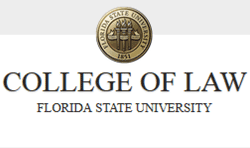Document Type
Article
Publication Date
2024
Publication Title
Florida Law Review
Publication Title (Abbreviation)
Fla. L. Rev.
Volume
76
First Page
469
Abstract
In the television series Severance, employees of Lumon Industries receive brain implants that divide their memories of work and home life. When employees arrive at work, implants block access to memories of the outside world and unlock memories formed on the job. By manipulating the flow of information in employees' brains, Lumon engages in what this Article calls cognitive content moderation. Though Severance is science fiction, emerging technologies, including drugs and electronic devices, promote cognitive content moderation by influencing thought, memory, and perception. Constitutional law is unprepared. To clarify freedom of thought and make it more useful, this Article presents a novel information-based theory of mind, which frames thought in terms of information flow. This approach bridges the divide between (1) free thought theory and doctrine, which are underdeveloped and underused, and (2) free speech theory and doctrine, which are robust and frequently employed.
Framing thought in terms of information flow allows the application of existing free speech doctrine to freedom of thought. For instance, the established First Amendment right to receive information and ideas can be applied to cognitive processes such as thought and recollection. These phenomena require the transfer of information from subconscious brain regions to one's conscious mind, which can be considered a listener for First Amendment purposes. Framing thought in terms of information flow also suggests the existence of a right to receive subconscious information, which protects listeners from coercive cognitive content moderation. The government interferes with this right by impeding the flow of mental information or restricting access to technologies that promote it. Framing thought in terms of information flow also defends freedom of thought's status as a fundamental First Amendment right. After describing the right to receive subconscious information and how existing theory and doctrine support it, this Article applies it to four examples of cognitive content moderation. It explains how the information-based theory intersects with First Amendment doctrine on commercial speech, government speech, and compelled speech. It concludes by discussing potential objections and proposing sensible limits to address them.
Recommended Citation
Mason Marks,
Cognitive Content Moderation: Freedom of Thought and the First Amendment Right to Receive Subconscious Information, 76
Fla. L. Rev.
469
(2024),
Available at: https://ir.law.fsu.edu/articles/819
